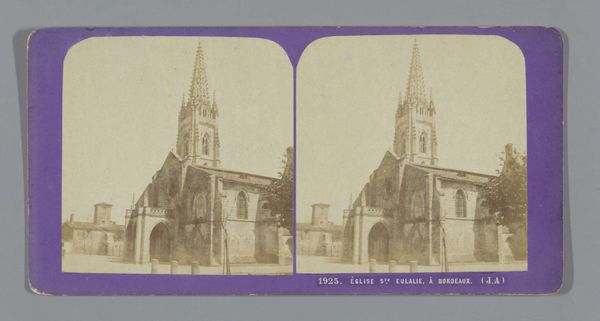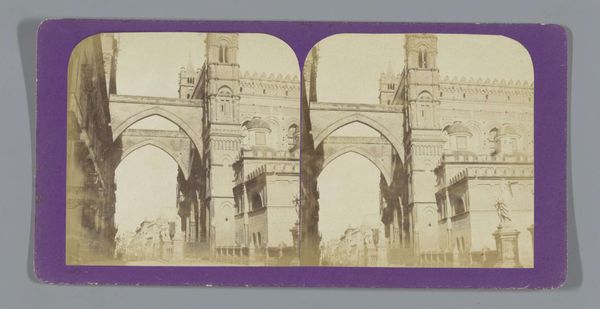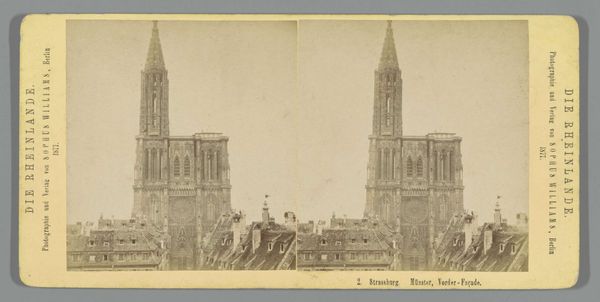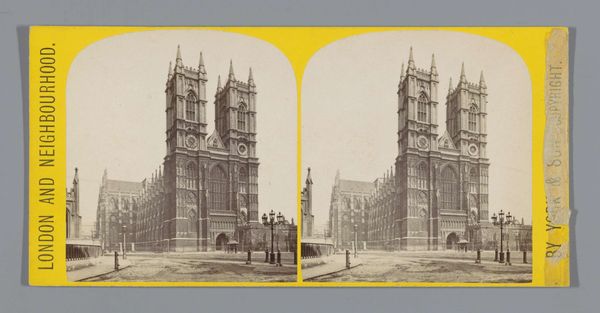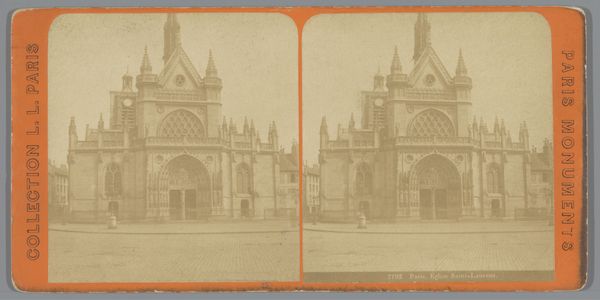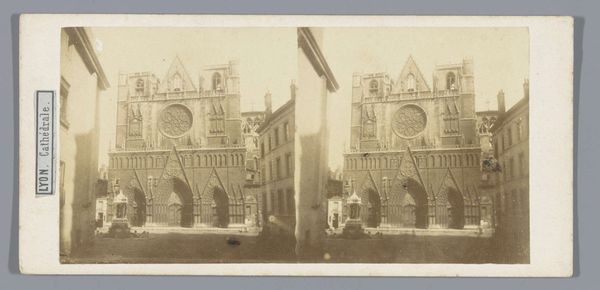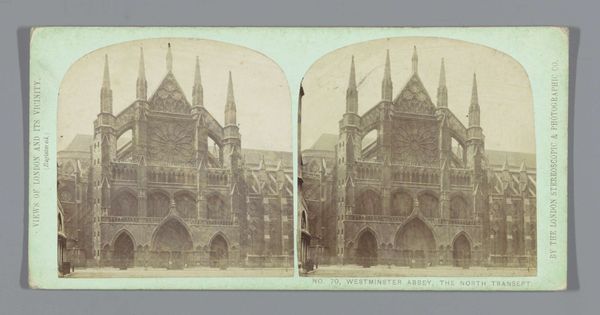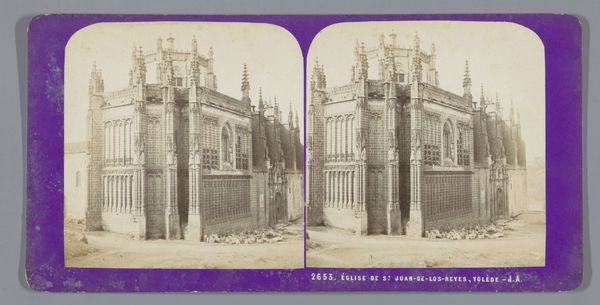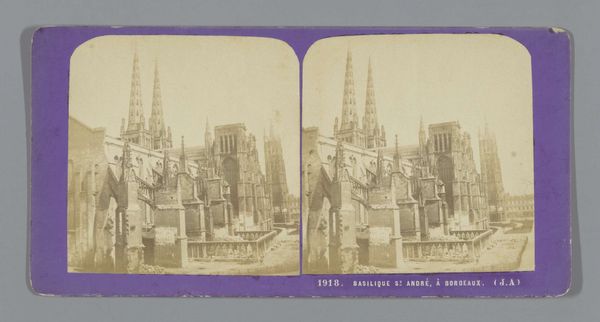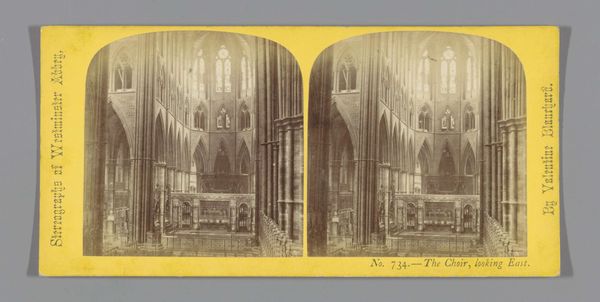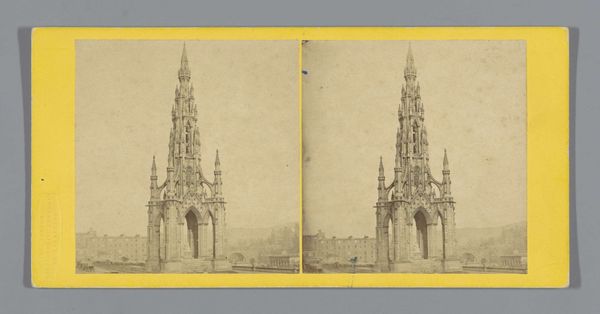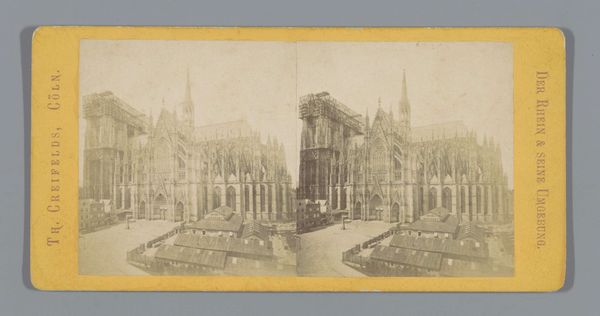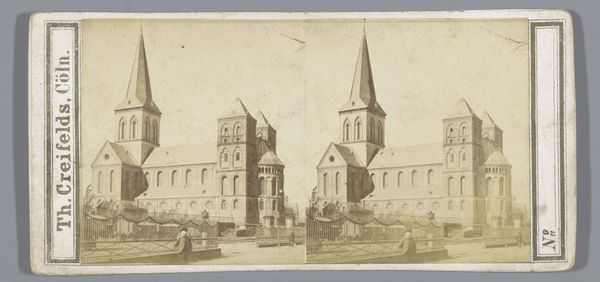
print, photography, architecture
# print
#
landscape
#
photography
#
romanesque
#
architecture
#
building
Dimensions: height 85 mm, width 170 mm
Copyright: Rijks Museum: Open Domain
Curator: This stereo photograph, taken by Jean Andrieu between 1862 and 1876, presents the facade of the Basilique Saint-Michel in Bordeaux. The monochrome image is striking, isn't it? Editor: It is! It immediately makes me think about preservation and the work involved in keeping historical buildings standing. The basilica looks like it's undergoing repairs; note the scaffolding obscuring some of the architectural details. It introduces a gritty, workaday reality into a monumental and historically rich structure. Curator: Absolutely. The basilica itself represents centuries of craftsmanship and devotion. The Romanesque architecture, which the label tells us, suggests that materials such as local stone would have been quarried and then transported to this site and processed by the hands of many, many artisans over decades. Editor: And the decision to document this specific facade under those conditions reveals so much about the relationship between institutions and the public's perception of architectural heritage. Was there an attempt to showcase its state or an ongoing civic project through distribution? Was the repair an embarrassment to civic leaders? This photograph then operates on two levels, as a historical record of an architectural style and a documentation of social values in that time period. Curator: Yes! We also cannot ignore the photograph itself as a commodity. Stereo photography was a popular form of entertainment; viewers would purchase them and view the scene in 3D through a special viewer. It raises the question: Was it just for aesthetics or for promotion purposes as postcards do today? Was this photograph acting as propaganda for a restored historical space? The layers are quite intriguing! Editor: Definitely food for thought. It underscores how images can serve as powerful tools in shaping collective memory and celebrating a place through art or, in this case, architecture. Curator: Ultimately, I believe it reminds us to reconsider that photographs like this are also commodities made from complex manufacturing processes with its own intricate labor processes and complex circulation networks in consumer societies. Editor: Well said! A seemingly straightforward image that’s pregnant with nuanced details regarding artistry, labour, socio-political forces and production.
Comments
No comments
Be the first to comment and join the conversation on the ultimate creative platform.
